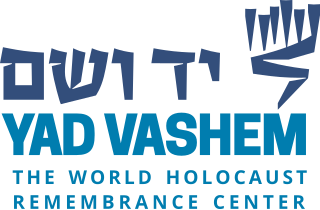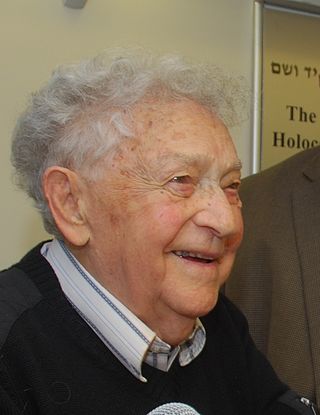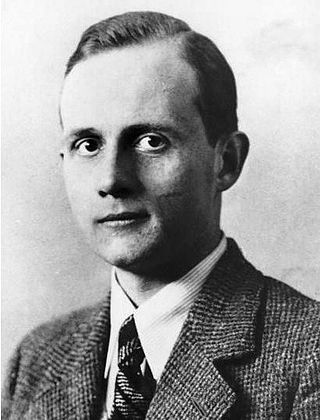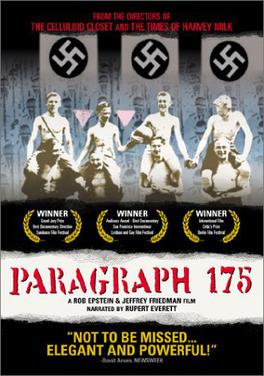
Yad Vashem is Israel's official memorial to the victims of the Holocaust. It is dedicated to preserving the memory of the Jews who were murdered; honoring Jews who fought against their Nazi oppressors and Gentiles who selflessly aided Jews in need; and researching the phenomenon of the Holocaust in particular and genocide in general, with the aim of avoiding such events in the future. Yad Vashem's vision, as stated on its website, is: "To lead the documentation, research, education and commemoration of the Holocaust, and to convey the chronicles of this singular Jewish and human event to every person in Israel, to the Jewish people, and to every significant and relevant audience worldwide."

The United States Holocaust Memorial Museum (USHMM) is the United States' official memorial to the Holocaust. Adjacent to the National Mall in Washington, D.C., the USHMM provides for the documentation, study, and interpretation of Holocaust history. It is dedicated to helping leaders and citizens of the world confront hatred, prevent genocide, promote human dignity, and strengthen democracy.

Volker Beck is a German politician. From 1994 to 2017, he was a member of the Bundestag, the German federal parliament, for the Green Party. Beck served as the Green Party Speaker for Legal Affairs from 1994 to 2002, and as the Green Party Chief Whip in the Bundestag till 2013. He was spokesman of the Green Parliamentary Group for interior affairs and religion. In 2014 he was elected President of the German-Israeli Parliamentary Friendship Group of the German Bundestag.

The Memorial to the Murdered Jews of Europe, also known as the Holocaust Memorial, is a memorial in Berlin to the Jewish victims of the Holocaust, designed by architect Peter Eisenman and Buro Happold. It consists of a 19,000-square-metre (200,000 sq ft) site covered with 2,711 concrete slabs or "stelae", arranged in a grid pattern on a sloping field. The original plan was to place nearly 4,000 slabs, but after the recalculation, the number of slabs that could legally fit into the designated areas was 2,711. The stelae are 2.38 m long, 0.95 m wide and vary in height from 0.2 to 4.7 metres. They are organized in rows, 54 of them going north–south, and 87 heading east–west at right angles but set slightly askew. An attached underground "Place of Information" holds the names of approximately 3 million Jewish Holocaust victims, obtained from the Israeli museum Yad Vashem.

The Reparations Agreement between Israel and the Federal Republic of Germany was signed on September 10, 1952, and entered in force on March 27, 1953. According to the Agreement, West Germany was to pay Israel for the costs of "resettling so great a number of uprooted and destitute Jewish refugees" after the war, and to compensate individual Jews, via the Conference on Jewish Material Claims Against Germany, for losses in Jewish livelihood and property resulting from Nazi persecution.

This is a selected bibliography and other resources for The Holocaust, including prominent primary sources, historical studies, notable survivor accounts and autobiographies, as well as other documentation and further hypotheses.

Yitzhak Arad was an Israeli historian, author, IDF brigadier general and Soviet partisan. He also served as Yad Vashem's director from 1972 to 1993, and specialised in the history of the Holocaust.

Ernst Eduard vom Rath was a member of the German nobility, a Nazi Party member, and German Foreign Office diplomat. He is mainly remembered for his assassination in Paris in 1938 by a Polish Jewish teenager, Herschel Grynszpan, which provided a pretext for Kristallnacht, "The Night of Broken Glass".

Paragraph 175 is a documentary film released in 2000, directed by Rob Epstein and Jeffrey Friedman, and narrated by Rupert Everett. The film was produced by Rob Epstein, Jeffrey Friedman, Janet Cole, Michael Ehrenzweig, Sheila Nevins and Howard Rosenman. The film chronicles the lives of several gay men and one lesbian who were persecuted by the Nazis. The gay men were arrested by the Nazis for the crime of homosexuality under Paragraph 175, the sodomy provision of the German penal code, dating back to 1871. Between 1933 and 1945, 100,000 men were arrested under Paragraph 175. Some were imprisoned, others were sent to concentration camps. Only about 4,000 survived.

Judenfrei and judenrein are terms of Nazi origin to designate an area that has been "cleansed" of Jews during The Holocaust. While judenfrei refers merely to "freeing" an area of all of its Jewish inhabitants, the term judenrein has the even stronger connotation that any trace of Jewish blood had been removed as an alleged impurity in the minds of the criminal perpetrators. These terms of racial discrimination and racial abuse are intrinsic to Nazi anti-Semitism and were used by the Nazis in Germany before World War II and in occupied countries such as Poland in 1939. Judenfrei describes the local Jewish population having been removed from a town, region, or country by forced evacuation during the Holocaust, though many Jews were hidden by local people. Removal methods included forced re-housing in Nazi ghettos especially in eastern Europe, and forced removal or Resettlement to the East by German troops, often to their deaths. Most Jews were identified from late 1941 by the yellow badge as a result of pressure from Joseph Goebbels and Heinrich Himmler.
The Holocaust has been a prominent subject of art and literature throughout the second half of the twentieth century. There are a wide range of ways–including dance, film, literature, music, and television–in which the Holocaust has been represented in the arts and popular culture.

Holocaust survivors are people who survived the Holocaust, defined as the persecution and attempted annihilation of the Jews by Nazi Germany and its allies before and during World War II in Europe and North Africa. There is no universally accepted definition of the term, and it has been applied variously to Jews who survived the war in German-occupied Europe or other Axis territories, as well as to those who fled to Allied and neutral countries before or during the war. In some cases, non-Jews who also experienced collective persecution under the Nazi regime are also considered Holocaust survivors. The definition has evolved over time.

Nakam was a paramilitary organization of about fifty Holocaust survivors who, after 1945, sought genocidal revenge for the murder of six million Jews during the Holocaust. Led by Abba Kovner, the group sought to kill six million German people in a form of indiscriminate revenge, "a nation for a nation". Kovner went to Mandatory Palestine in order to secure large quantities of poison for poisoning water mains to kill large numbers of Germans, and his followers infiltrated the water system of Nuremberg. However, Kovner was arrested upon arrival in the British Zone of Occupied Germany and had to throw the poison overboard.

The Memorial to Homosexuals persecuted under Nazism in Berlin was opened on 27 May 2008.

Polish Jews were the primary victims of the German-organized Holocaust in Poland. Throughout the German occupation of Poland, many Poles rescued Jews from the Holocaust, in the process risking their lives – and the lives of their families. Poles were, by nationality, the most numerous persons who rescued Jews during the Holocaust. To date, 7,177 ethnic Poles have been recognized by the State of Israel as Righteous among the Nations – more, by far, than the citizens of any other country.

The Będzin Ghetto was a World War II ghetto set up by Nazi Germany for the Polish Jews in the town of Będzin in occupied south-western Poland. The formation of the 'Jewish Quarter' was pronounced by the German authorities in July 1940. Over 20,000 local Jews from Będzin, along with additional 10,000 Jews expelled from neighbouring communities, were forced to subsist there until the end of the Ghetto history during the Holocaust. Most of the able-bodied poor were forced to work in German military factories before being transported aboard Holocaust trains to the nearby concentration camp at Auschwitz where they were exterminated. The last major deportation of the ghetto inmates by the German SS – men, women and children – between 1 and 3 August 1943 was marked by the ghetto uprising by members of the Jewish Combat Organization.

Rudolf Brazda was the last known concentration camp survivor deported by Nazi Germany on charges of homosexuality. Brazda spent nearly three years at the Buchenwald concentration camp, where his prisoner uniform was branded with the distinctive pink triangle that the Nazis used to mark men interned as homosexuals. After the liberation of Buchenwald, Brazda settled in Alsace, northeastern France, in May 1945 and lived there for the rest of his life.

Hajo Meyer was a German-born Dutch physicist, Holocaust survivor and political activist. While primarily known for his public commentaries in terms of the European Jewish community, he is also noted for his work directing the facility Philips Natuurkundig Laboratorium for many years.

Walter Bingham is a British-Israeli journalist, actor, entrepreneur, Holocaust survivor and decorated World War II veteran. He made Aliyah to Israel in 2004. At age 99 in 2023, Walter is Israel's oldest working journalist. He also holds the Guinness World Record as oldest Radio Talkshow Host.
















